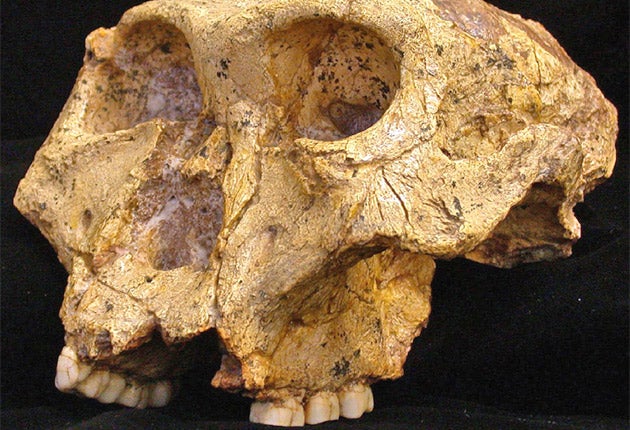Early women had to go forth and multiply, while men stayed home
Some 90 per cent of men seem to have lived and died in the place where they were born compared to half of women

The fossilised teeth of early human ancestors who lived two million years ago in southern Africa have provided a remarkable insight into their social organisation, which appears to have resulted in the females moving away from their childhood homes when they reached adulthood.
Virtually nothing is known about how these ape-like people lived but analysis of their teeth suggests males lived and died where they were born while females moved from their birthplace to raise families many miles away, where they then died. The findings suggest ancestral populations had a social structure that depended on males living in one area, and possibly defending their territory against intruders, whilst females moved from one place to another when they reached adolescence, either voluntarily or by force.
Researchers said the findings show a difference between the sexes in terms of roaming. They suggest the pattern is similar to how young female chimpanzees tend to move away from their family, which avoids inbreeding with male relatives.
Sandi Copeland of the University of Colorado at Boulder said the strontium chemical isotopes of the fossilised teeth were being used to study general migratory patterns, but that the male-female distinction soon emerged.
"We were somewhat surprised at our major finding that there were statistical differences between [the sexes]... At least 50 per cent of females did not grow up in the area where they eventually died," Dr Copeland said.
"Here we have the first direct glimpse of the geographic movements of early hominids, and it appears the females preferentially moved away from their residential groups," she said.
The 19 teeth that formed the study came from two early ancestral species, Australopithecus africanus, which is believed to be a direct human ancestor, and Paranthropus robustus, a side-branch of the ancestral tree that eventually gave rise to the genus Homo. Both species lived in the same region of South Africa in caves about a mile apart, although P. robustus lived about 1.7 million years ago compared to the 2-2.7 million years of A. africanus.
Tiny fragments of tooth enamel were analysed by laser ablation for strontium isotopes. The ratio of the isotopes laid down when the enamel is formed usually matches the ratio found in the surrounding plants, soil and rock where the individual lives at that time.
"The strontium isotope ratios are a direct reflection of the foods these hominids ate, which in turn are a reflection of the local geology," said Dr Copeland.
The study, published in the journal Nature, concentrated on two types of teeth – the canines and the third molars – which are known to be different in terms of size between the sexes. Larger teeth were assumed to be from males with smaller teeth from females. About 90 per cent of the males appear to have lived and died in the place they were born, compared to only about half of the females.
The scientists said the limited range of the males raised questions about the origins of bipedalism – walking on two legs – which was thought to have arisen in order for males in particular to roam long distances in search of food. "The ranging of the landscape seems to be a little more restricted than we at first thought and it seems to be divided along lines of male and females," Dr Copeland said.
"We assumed more of the hominids would be from non-local areas, since it is generally thought the evolution of bipedalism was due in part to allow individuals to range longer distances."
The study was carried out with scientists from Oxford University, the Max Planck Institute in Leipzig and South Africa's University of Cape Town.
Join our commenting forum
Join thought-provoking conversations, follow other Independent readers and see their replies
Comments
Bookmark popover
Removed from bookmarks